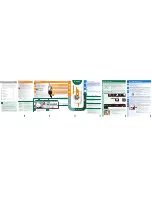
-manually redistribute the load so that
the items are spaced evenly around the
tub;
-press the
button. The spin phase
continues.
• Button up pillowcases, close zippers,
hooks and poppers. Tie up belts,
cords, shoelaces, ribbons and any
other loose elements.
• Empty the pockets and unfold the
items.
10.2
Stubborn stains
For some stains, water and detergent is
not sufficient.
We recommend that you pre-treat these
stains before you put the items in the
appliance.
Special stain removers are available. Use
the special stain remover that is applicable
to the type of stain and fabric.
Do not spray stain remover on garments
near the appliance as it is corrosive to the
plastic parts.
10.3
Detergent type and
quantity.
The choice of detergent and use of correct
quantities not only affects your wash
performance, but also helps to avoid
waste and protect the environment:
• Use only detergents and other
treatments specially made for washing
machines. First, follow these generic
rules:
– powder detergents for all types of
fabric, excluding delicate. Prefer
powder detergents containing
bleach for whites and laundry
sanitization,
– liquid detergents, preferably for low
temperature wash programmes
(60 °C max) for all types of fabric,
or special ones for woollens only.
• The choice and quantity of detergent
will depend on: type of fabric
(delicates, woollens, cottons, etc), the
colour of clothes, size of the load,
degree of soiling, wash temperature
and hardness of the water used.
• Follow the instructions that you find on
packaging of the detergents or other
treatments without exceeding the
indicated maximum level (
).
• Do not mix different types of
detergents.
• Use less detergent if:
– you are washing a small load,
– the laundry is lightly soiled,
– there is large amounts of foam
during washing.
• When using detergent tabs or pods,
always put them inside the drum, not in
the detergent dispenser.
Insufficient detergent may cause:
• unsatisfactory washing results,
• the wash load to turn grey,
• greasy clothes,
• mould in the appliance.
Excessive detergent may cause:
• sudsing,
• reduced washing effect,
• inadequate rinsing,
• a greater impact for the environment.
10.4
Ecological hints
To save water, energy and to help protect
the environment, we recommend that you
follow these tips:
•
Normally soiled laundry
may be
washed
without prewash
in order to
save detergent, water and time (the
environment is protected too!).
• Loading the appliance to the
maximum
capacity indicated for each
56













































